Why Do My Baby Back Ribs Take 5 Hours
Brisket, pork butt, ribs. These are the holy trinity of BBQ, and with good reason. These collagen-rich cuts thrive in the low, smoky heat of the BBQ cooker, slowly melting into gelatin-infused, bark-encrusted savory treats. And in no other BBQ cut practice yous get the bark-to-meat ratio that you lot practice with ribs: slabs of ribs, dry rubbed and spicy; whole racks of ribs, glazed with tangy-sweetness sauce; riblets for gnawing while you pick at the terminal of your coleslaw. They are wonderful.

Rib temp: 190°-205°F (88°-96°C)
While ribs are decidedly a part of the barbecue pantheon, in that location is a division to be made there. Spare ribs—anything but spares to those who know!—are the able-bodied, good-looking, more muscular big blood brother in the rib family. However, you shouldn't overlook the tender, shorter, amiable trivial blood brother! Infant dorsum ribs are often relegated to the realm of 'pop' food, thanks in large part to a certain jingle that I'm not going to mention. Since baby dorsum ribs' introduction into fast-casual dining in 1997, some BBQ meisters have turned their noses upward at this cutting of meat; but I'yard here to tell you that there is nevertheless a place at the BBQ tabular array for baby back ribs!
At home, I love baby back ribs"—Meathead Goldwyn
While most BBQ organizations encourage the utilize of spare ribs for contest, baby back ribs are excellent for the home. In this article, we'll expect at the thermal experience of baby back ribs on their way to competition-style results. We'll exist using Smoking-Meat.com's guidelines for the meat and the dual-aqueduct Blazon-K thermocouple ThermaQ ® Blue to track the temperature through the cook.
Baby Dorsum Ribs Groundwork
Spare ribs vs. infant back ribs
The popularity that baby back ribs' do have has been helped greatly by their name, which sounds tender and succulent. The name suggests tenderness far meliorate than the term "loin ribs" does—loin is not a 'pretty' word—and nevertheless, that is precisely what they are. The loin lies forth the convex side of the ribs. In fact, if you consume bone-in pork chops, you are getting baby back ribs for the bone. Spare ribs, by comparison, are found further down the sides of the hog and are coated on the convex side with abdomen meat. They are part and packet of the same structure simply are from different sections of the whole.
As you lot can see, the 'dorsum' in 'baby back' refers to their location, high up on the pig'south back. 'Baby' simply comes from their smaller size—it has nothing to practice with the historic period of the pig!
Cooking baby back ribs
So what does their location on the pig hateful for cooking baby backs? For one thing, they're even so ribs, and that means connective tissue. Y'all tin't simply slap these babies on the grill and cook them to a food-safe 145°F (63°C) or they'll exist tough as nails. Slow cooking volition deliquesce that collagen.
Merely what happens when you cook things past 155°F (68°C)? That's right all the water in the muscle fibers is wrung out by the denaturing proteins. And when that newly-released water finds its manner to the surface of the meat it starts to evaporate and y'all go the infamous stall.
To overcome the stall, take a page from brisket cookery and wrap the ribs, this time with aluminum foil. Every pitmaster has their own technique, merely most follow something along the lines of what Steven Raichlen calls the 3-2-1 method. This guideline for reaching the proper temperature ways cooking for about three hours without a wrap, and so for 2 hours wrapped tightly in foil, then for another hour unwrapped once more. Only note that this time structure isonly a guideline for achieving thermal processes. You need to get the ribs into a collagen-melting temperature zone—above 170°F (77°C)—and go on them at that place long enough to tenderize.
You could just cook the ribs bare until they reach a temperature that indicates enough collagen has cleaved down, but that takes a while. Wrapping them prevents evaporative cooling (the stall), allowing your ribs to get to temperatures where collagen melts even faster. By the time your ribs reach 200°F (93°C), they should be tender enough to eat. All the wrapping and unwrapping serves mostly to achieve a proper bark and tospeed the journeying to the proper temperature.
For infant backs, Jeff Phillips of Smoking-Meat.com calls for a shorter 5-60 minutes version of this method, but the concept is the same: cooking them wrapped the whole time would make the bawl soggy and sorry, but wrapping for only part of the melt yields tender, barky ribs that have spent plenty time in the melting-temp zone.
So much for the rib meat: what well-nigh that thick layer of meat on top of the baby backs? That is loin meat. Loin meat is, in essence, a pork ribeye and is susceptible to drying out. It is low on collagen and also rather lean, so cooking it to whatsoever temperature above 150°F (66°C) will overdo information technology. This is where baby backs accept a declining. Information technology is tempting to get super-meaty baby dorsum ribs with a thick layer of loin, but that meat is liable to overcook. Rather than looking for actress-compact ribs, look for those that have a relatively thin layer of loin meat. The transition layer from rib to loin has the connective tissue needed to rehydrate the meat during a longer cook.
Baby dorsum rib temperature
The ribs, equally we've discussed, are full of collagen, and collagen dissolution is a function of both time and temperature. This means that the way nosotros arroyo a finishing temperature matters nigh as much as the temperature itself. Jeff Phillips recommends a rib temp of 195°F (91°C), right in line with ThermoWorks approved rib temp of 190°-205°F (88°-96°C), but he proposes ii methods of arriving there, one of which will requite you lot fall-off-the-bone tender ribs, the other of which volition get you lot a contest-style rib that can pass the bite exam: This means the rib must exist bitten into to become the meat off the bone, while a perfect seize with teeth mark must remain behind without whatsoever extra meat trigger-happy away from the rib along with your bite. The meat must pull away easily from the bone.
I'll evidence you how to get them as tender every bit what yous find in the restaurant if that's what you're after."—Jeff Phillips
For competition style, use a timing formula of iii-one-1, iii hours blank, one hour wrapped, so 1 hour bare again. (Note, for fall-off-the-bone ribs—for those that prefer them that way—utilize 2-2-ane. The longer fourth dimension in the moist environment of the foil allows the collagen to break down more than rapidly—there is more fourth dimension without evaporative cooling!)
Towards the end of the bare-ribs phase, y'all will discover that the temperature increment starts to irksome. That'due south the stall starting to happen. Wrap those ribs with foil to speed things back up.
As shortly as the ribs are wrapped, their internal temperature will get-go to climb over again, up to and beyond the recommended minimum of195°F (91°C). Once they are unwrapped again, the meat temperature will actually drop as the water that has accumulated on the surface starts to evaporate. This ways that the ribs volition stay in the collagen-melt zone without more heat goinginto them.
Thermally speaking, it'due south a lot like the fob of using a libation with wrapped ribs that are mostly cooked to allow them to finish "melting." The libation-method is a bully way to amend the texture of your meat, but information technology wreaks havoc on your bark. By assuasive evaporative cooling to occur in the smoker, we can accomplish melty ribs that aren't overcooked and that have a craveable bark. Thermodynamics!
Beneath is a graph from the cook that we did, using the ThermaQ Blue to monitor the temperatures. You tin run into the stall starting effectually 160°F (71°C). Then you can see the temp drop when we removed the probe for wrapping, later which the temperature starts to climb much faster. When we unwrap the ribs, the evaporative cooling takes over and the temperature dips, merely starts to recover before we take them off the estrus for good.
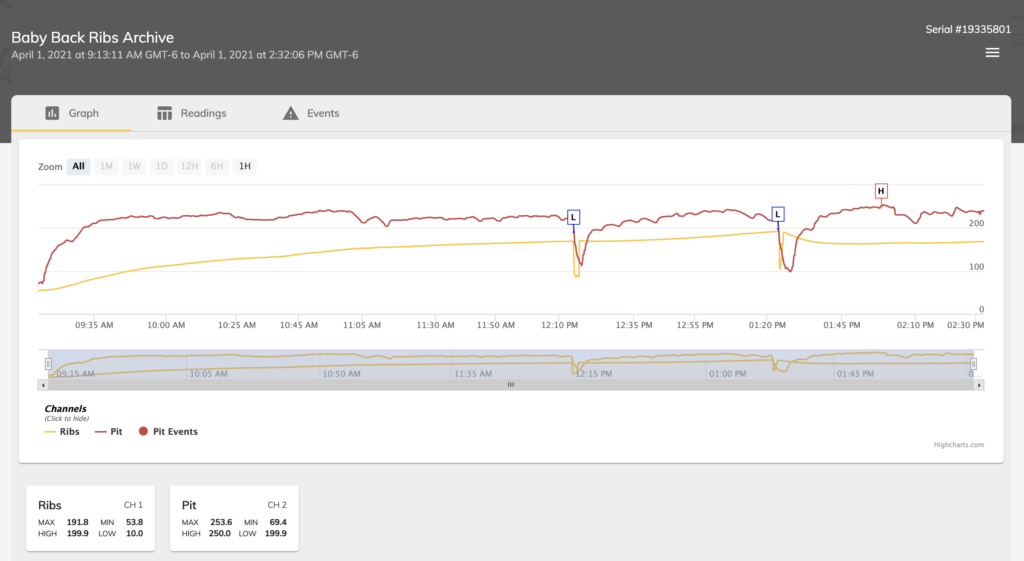
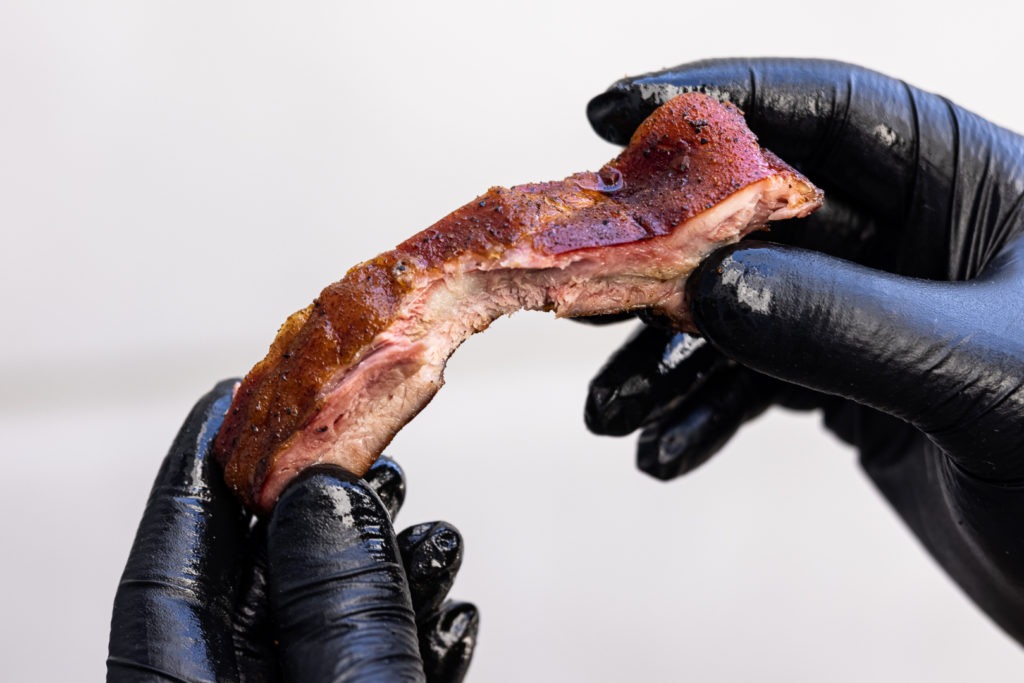
Baby dorsum ribs deserve their place in barbecue royalty. They are succulent, fun, and pretty easy to make! Use a good thermometer like the ThermaQ Blue or a Thermapen One and remember the wrapping method: ii-2-1 for soft, 3-1-one for competition style. May is National Barbecue Month, and we hope that you'll give them a try!
Impress
- 1 rack, baby back ribs
- 3–4 Tbsp mustard
- Your favorite BBQ rub, equally needed
- Your favorite BBQ sauce, optional
Special equipment: two large sheets of heavy-duty aluminum foil.
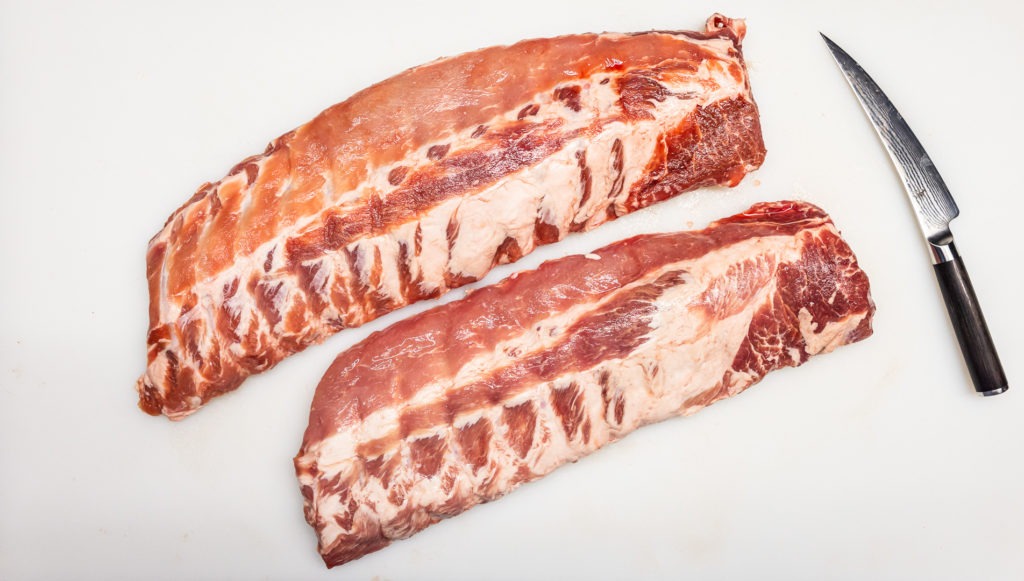
- Preheat your smoker to 220°-240°F (104°-116°C).
- Peel the membrane from the back of the rack of ribs. This facilitates bawl product on the underside of the ribs, only is ultimately optional. (Or, you tin can inquire your butcher to remove information technology for yous.)
- Slather the ribs in mustard. (Jeff Phillips says this pace is optional…I highly recommend it!)
- Utilize rub generously to the ribs, pressing to help it adhere to the mustard.
- Place ribs in the smoker. Insert a mini needle-probe into the ribs. Practice this betwixt the bones if the ribs have less meat or in the thickest role of the meat if they are very meaty. The needle probe is thin enough to fit into the rib meat without touching bone.
- Gear up your ThermaQ Blue to monitor the temperature.
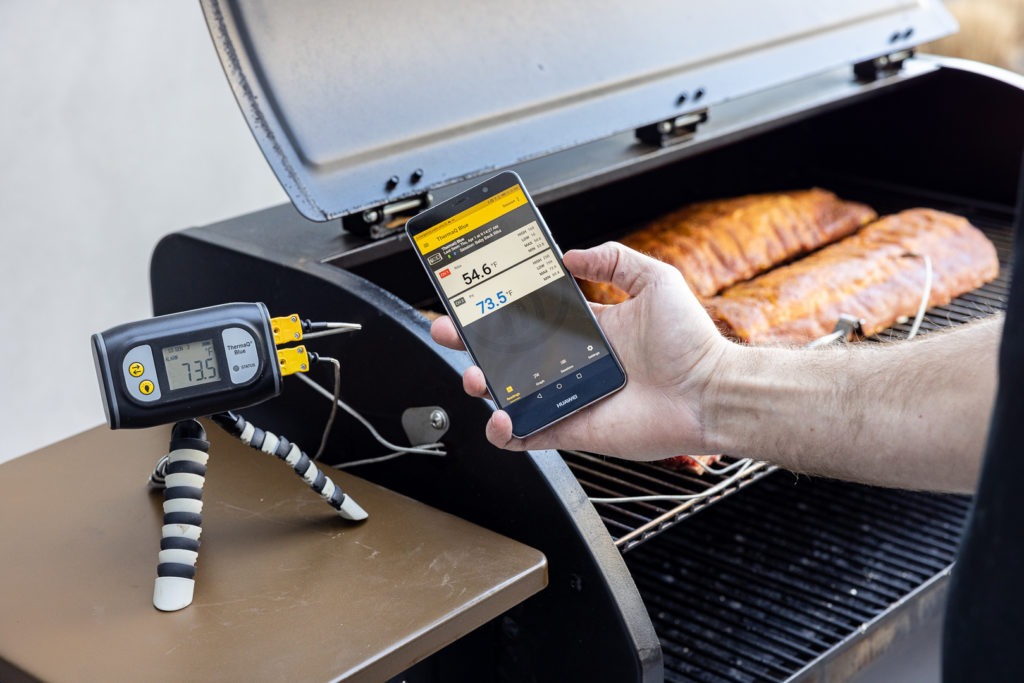
- Smoke the ribs for 3 hours for a competition-style finish, two hours for fall-off-the-bone ribs.
- When the fourth dimension has expired, wrap the ribs well in aluminum foil. The temp should be somewhere about the 170°F marker.
- Return the baby back ribs to the smoker. Re-insert the probe.
- Smoke for 1 hour (competition) or 2 hours (fall-off).During this time, see that the ribs reach the target temp of190°-205°F (88°-96°C). (set up the high-temp alert on the ThermaQ Blue to allow yous know when you get in that location.)
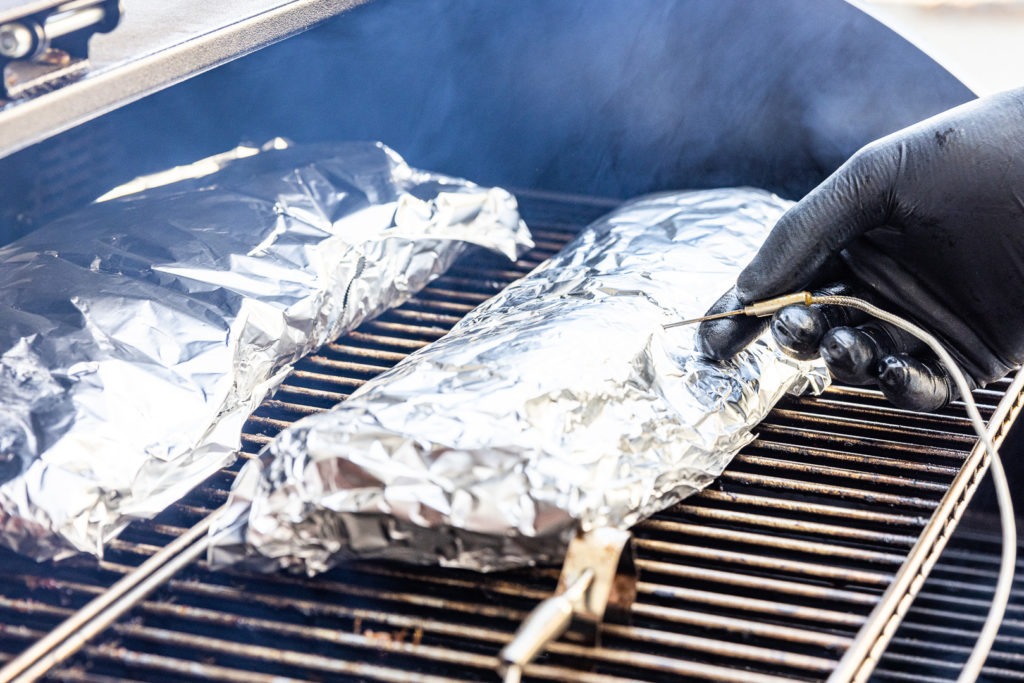
- Remove the ribs-package from oestrus and unwrap.
- If you desire glazed, sticky ribs, now is the fourth dimension to brush them with BBQ sauce. If you desire to keep them "dry out" just go on from here.
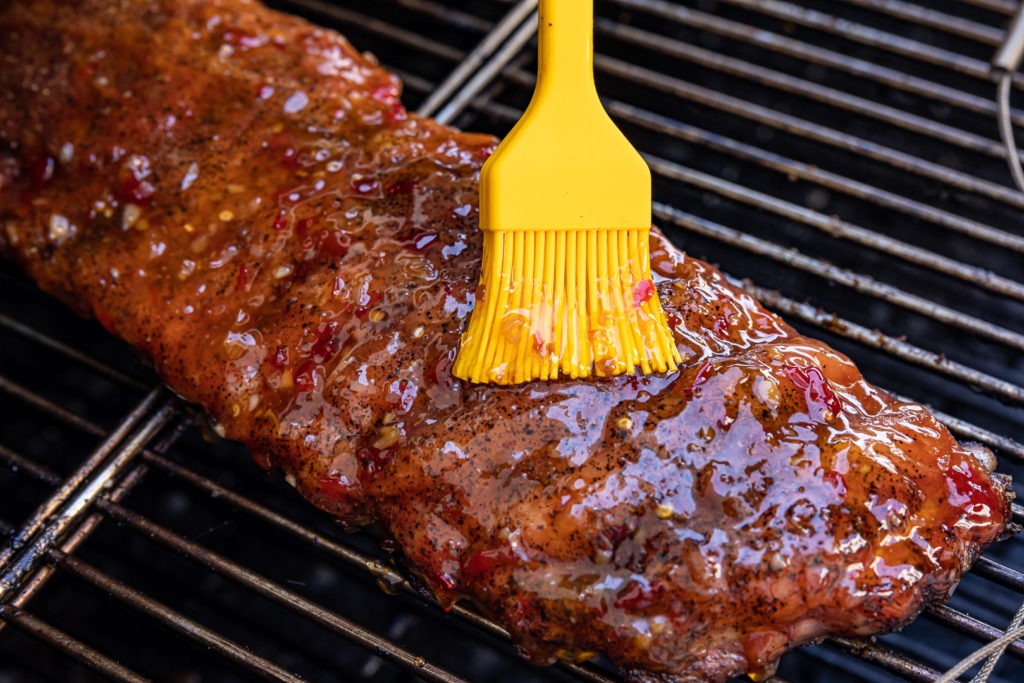
- Put the ribs dorsum in the smoker. Supersede the probe.
- Permit the ribs to melt for ane final hr. You will run across the temp drop during this time, so rise once more somewhat.
- Remove the ribs from oestrus. Let absurd enough to handle.
- Cut the ribs up and enjoy!
Shop now for products used in this mail:
Why Do My Baby Back Ribs Take 5 Hours
Source: https://blog.thermoworks.com/pork/perfect-temp-smoked-baby-back-ribs-a-thermal-exploration/
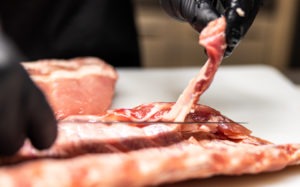
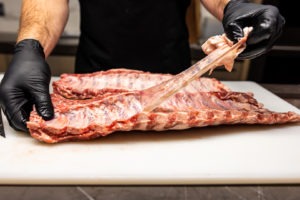
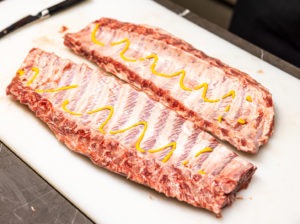
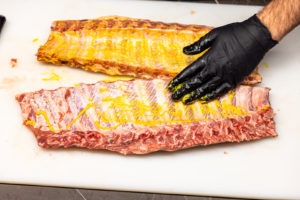
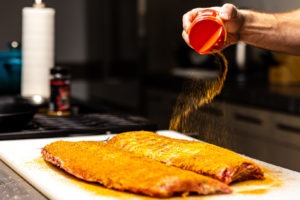
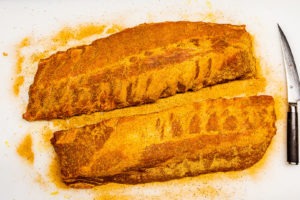
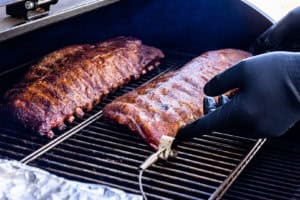
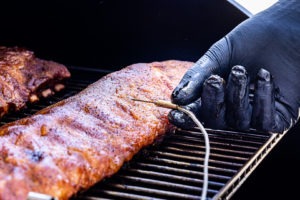
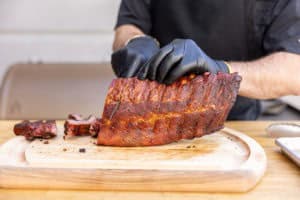
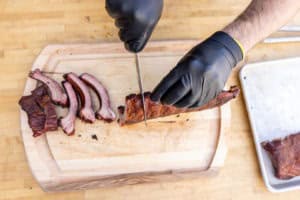

0 Response to "Why Do My Baby Back Ribs Take 5 Hours"
Post a Comment